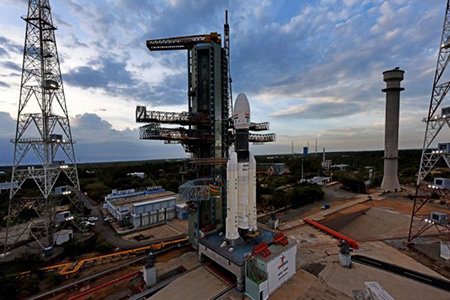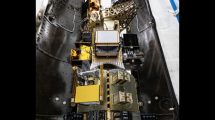
The launch of India’s second lunar mission was halted less than an hour before the scheduled blast-off, due to a technical problem.
The countdown reportedly stopped 56 minutes before the launch after a “technical snag was observed in the launch vehicle system,” India’s Space Agency said in a statement.
The satellite had been scheduled for launch at 02:51 local time on Monday (21:21 GMT Sunday) from Sriharikota space station on India’s eastern coast.
A new launch date will be announced soon.
India hopes the $150m, Chandrayaan-2, will be the first to land on the Moon’s south pole. It will focus on the lunar surface, searching for water and minerals and measuring moonquakes, among other things.
If successful, India will become the fourth country to make a soft landing on the Moon’s surface joining the US, China, and the former Soviet Union.
K Sivan, the Chief of the Indian Space Research Organisation (ISRO), said this was “the most complex space mission ever to be undertaken by the agency”.
The lander and rover are expected to touch down near the lunar south pole in early September, becoming the first-ever spacecraft to land in that region.
The spacecraft weighs 2,379kg (5,244lb) and has three distinct parts: an orbiter, a lander and a rover.
The orbiter, which has a mission life of a year, will take images of the lunar surface, and “sniff” the tenuous atmosphere.
The lander (named Vikram, after the founder of Isro) weighs about half as much and carries within its belly a 27kg Moon rover with instruments to analyse the lunar soil. In its 14-day life, the rover (called Pragyan – wisdom in Sanskrit) can travel up to a half a kilometre from the lander and will send data and images back to Earth for analysis.












Add Comment